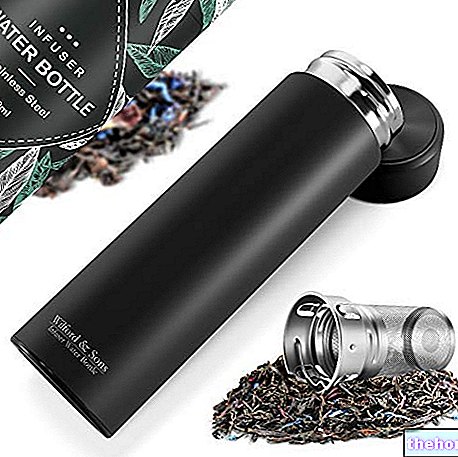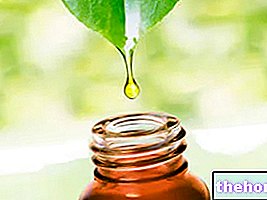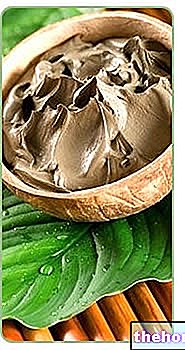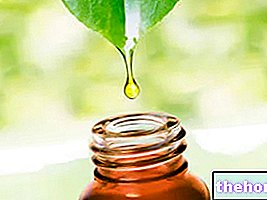Juglans regia L.
Fam. Juglandaceae
Etymology
Juglans is a Latin term coined in honor of Jupiter: "Jovis glans" that is the "acorn of Jupiter" since among the ancient Romans the walnut was the "tree consecrated to the king of the gods. The" adjective "regia" which means "royal" reveals that the tree was introduced to the West by the kings of Persia.
Description
The walnut is a tree 10 to 20 m high, with thick, expanded and rounded crown. It has an erect, straight trunk, with a basal diameter up to 1-2m, covered by a gray-whitish smooth bark in the early years, darker than that of the adult trunk, longitudinally fissured.
Alternate leaves, imparipinnate, with 5-7 elliptical leaflets and with entire margins, almost sessile, dark green above, paler below, slightly velvety due to the presence of tufts of hair at the insertion of the secondary veins on the main one.

See also:
- nux vomica
- kola nut
- walnut oil
- nuts calories
FRUIT: the fruit of the walnut is a drupe, composed of a fleshy and fragrant outer shell (the husk), an internal woody and ovoid core divided into two valves, containing the seed formed by 2 edible cotyledons, folded, irregularly lobed, cerebriform, called kernels. The two cotyledons are sunken into four compartments of the shell which are incompletely distinguished by a lignified and resistant false septum. The walnut seed has an excellent flavor, the more delicate the fresher it is, being rich in excellent quality oil, but which tends to turn rancid in a short time. They ripen in autumn; already in September, however, the shell reached a definitive solidity.
Areal
The walnut is believed to originate in central and south-western Asia, in the warm-temperate climate regions of Asia Minor, subsequently naturalized in Europe, in the rest of Asia and in central-southern America. In Italy it is widespread throughout the territory up to 1200m above sea level In Italy, cultivation is especially important in Campania.Culture
The walnut grows on deep soil, from moderately dry to humid, moderately loose and well ventilated, rather rich in nutrients, with a good fraction of humus; it can also vegetate on slightly acid soils, but preferably basic ones. Exposure in full sun, but does not cancel the half shade. The walnut should not be associated with other species, due to the secretion, by its roots, of toxic substances. The substances that pervade the dense network of roots, as well as leaves and fruits, are in fact unwelcome to other vegetables, but very useful to man.
DRUG: The walnut drug consists of the leaves and the husk. The leaves are harvested in the months of May-June, before the total development, detaching them without the petiole. The husk is harvested from August to September when fully ripe. The drug must be dried quickly in a cool and ventilated place, to avoid premature blackening of the parts.
The leaves and the husk are rich in tannins, vitamin C, citric and malic acid, essential oils, juglone, caffeic acid, quercetin.
Uses
In cosmetics: From the maceration of the walnut husk, a valuable oil is extracted, required by the cosmetic-soap industry. In the husk there are large quantities of juglone which is antiseptic and keratinizing, that is, it promotes the renewal of skin cells. It can be used as a bronzer. as it is capable of stimulating the production of melanin. It also has a quantity of unsaturated fatty acids and vitamins that make it a sort of natural filter against the sun's rays, comparable to a protection factor 2-3, therefore suitable for skins that are already The decoction of leaves is used to darken the hair and counteract its fall.
In herbal medicine, walnut is traditionally recognized as astringent, tonic, antiseptic and healing properties. It has bitter-tonic, digestive, decongestant and intestinal astringent properties, advantageous in the treatment of diarrhea and dysentery. Good results have been obtained in countering intestinal parasites mainly due to Taenia solium. It has also been used to treat, albeit with questionable results, lymphoglandular inflammations of tuberculous origin. It is useful for dermatosis, eczema, chilblains, ocular inflammations, in some disorders of the genital sphere: leucorrhoea in women and orchitis in men. diuresis stimulates pancreatic and hepatic function and is therefore useful for reducing the sense of heaviness. The extract of the leaves was also used in the past in the treatment of diabetes, in fact the walnut also has a hypoglycemic action.
In dietetics it is mainly used as fruit (kernels are eaten) and in the liqueur industry to produce the popular "nocino". Walnuts are a highly energetic food as they contain high quantities of lipids, most of which are polyunsaturated. In particular walnut it is quite rich in alpha-linolenic acid, which is attributed to the property of decreasing bad cholesterol (LDL) and triglycerides.
Furthermore, being rich in antioxidants, walnuts can help reduce oxidative stress and counteract skin and cellular aging.
The proteins contained in it also hide therapeutic properties. In fact, they are particularly rich in an amino acid, arginine, which is transformed by the cells of the vessel wall into nitroxide, a substance capable of preventing and counteracting the phenomena of arteriosclerosis.
They are also rich in mineral salts (copper, zinc, iron and phosphorus), B vitamins and vitamin E.
The panels made up of the residues of the pressed kernels are destined to feed the cattle.
In organic farming it is used as a repellent plant
OTHER USES: the fatty oil obtained from walnut is used as a lubricant and given its high drying coefficient, by the paint industry.
Walnut wood is also highly sought after for the production of furniture and floors thanks to its easy workability and long life.
Select plant Fir Acacia Acerola Sorrel Yarrow Yarrow Yarrow Aconito Adatoda Garlic Agnocasto Agrimonia Alchemilla Alkekengi Aloe Altea Witch Hazel Ammi or Visnaga Pineapple Andrographis Anemone Pulsatilla Angelica Anise Star Anise Japanese Star Anise Bitter Orange Bitter Areca Arnica Harpagophytum Arpagophyte Artemisia Asteragus Basil Asparagus Asparagus Peruvian Asparagus Asparagus Asparagus Hawthorn Boldo Borage Shepherd's Purse Boswellia Bucco Butea superba Cocoa Coffee Cajeput Calamus Calamus Marigold Camedrio Chamomile Roman Chamomile Camphor Cinnamon Ceylon Maidenhair Capuchin Artichoke Cardamom Cardiac Thistle Asian Thistle Carvi Cascara Cassia Catecu Catha Cabbage Celandine Chicory Centaurea Cinnamon Cypress Celandine Chives Cypress Coca Cola Colchico Combreto Condurango Comfrey Coriander Cranberry Barberry American Chrysanthemum Cumin Turmeric Damiana Digital Dioscorea Drosera Dulcamara Dunalilella Echinacea Eder a Ephedra Elenio Eleutherococcus Helichrysum Evening primrose Horsetail Alfalfa Erica Euphrasia Erisimo Escolzia Eucalyptus Farfara Farfaraccio Calabar bean Fenugreek Fennel Phytolacca Frangola Ash Fumaria Japanese Mushrooms Galega Ganoderma lucidum Garcinia Cambogia Mulberry Gentian Broom Ginkgo Ginkgo Guipana Guipana Gynestra Ginkgo Hibelia Gymnasium Hibiscus Guarulp St. John's Wort Horse Chestnut Ispaghul Hyssop Jaborandi Kava kava Konjac Laminaria Cherry Laurel Lavender Lemongrass Lespedeza Lovage Icelandic Lichen Lemon Flax Lippia Licorice Lobelia Hops Maca Marjoram Maize Mallow Manna Marrubio Marrubio d "water Matè Melaleuca Meliloto American Lemon balm Myrtle Myrama Walnut Nutmeg Walnut vomica Olive tree Meadowsweet Ononide Opuntia Oregano Orthosiphon Nettle Poppy Papaya Parietaria Feverfew Passiflora Chilli Perilla Periwinkle Phyllanthus Plantain Picrorhiza Pilosella Pino Pisci dia Podofillo Polygala Grapefruit Parsley Psyllium Pueraria mirifica Butcher's broom Pygeum Quassia Oak Rhubarb Ratania Rauwolfia currant Castor bean Rhodiola Rosehip Rosemary Rue Willow Sarsaparilla Sage Elderberry Sassafras Sedum Ergot Senna Serenoa Repens Soybean Solidago Tansy Taraxus Tamarind Tamarind Tamarind Tamarind Tamarindo Ursina Valerian Vanilla Mullein Verbena Veronica Viburnum Vinca Pansy Mistletoe Vine Withania Yohimbe Saffron Ginger Pumpkin Select disease Juvenile Acne Rosacea Tinnitus Tinnitus Aerophagia Tendon Affections Afonia Aphthae Algias Functional Halitosis Breastfeeding Allergy Anemia Anguish Anxiety Arteriosclerosis Asthrosis Asthrosis Arthritis Arthritis Men Sex Woman Blepharitis and Conjunctivitis Eye bags Bronchitis Gallstones Kidney stones Salivary stones Baldness Androgenetic Candida Fragile hair Caries Headache Cellulitis Motion sickness Cystitis C limaterio Cholecystopathy High cholesterol Ulcerative colitis Colonoscopy Contusions Hematoma Convalescence Couperose Depression Dermatitis Diaper dermatitis Diabetes Diarrhea Erectile dysfunction Dyslipidemia Dysmenorrhea Dyspepsia Disturbances of vision Hemorrhoids Epistaxis Herethism Heart disease Fever Fibromyalgia Gastro-intestinal disease Flatulence Hypertension Fibromyalgia Gastrointomnia Jaundice Laryngitis Renal lithiasis Toothache Sore throat Thinness Menopause Meteorism Mononucleosis Alzheimer's disease Crohn's disease Nausea Vomiting Obesity Dark circles Onychomycosis Osteoporosis Dry skin Periarthritis Piorea Low pressure Prostatitis Psoriasis Colds Breast fissures Anal fissures Gastro-nasal rhinitis Senescence Premenstrual Syndrome Sinusitis Quit smoking Overweight Fatty liver Constipation Stomatitis Stress Cough Triglycerides high Ulcer Burns Nails Brittle flashes Heat Warts Dizziness Properties herbal Tanning Abortive adaptogenic Aphrodisiac bittering analgesic anesthetic anorectics analgesic antacid anti-allergic anti-asthmatic Antibiotic catarrh Anticellulitiche anticonvulsant Antidiaforetiche antidiarrheal edematous anthelmintic antiemetic Antiemorroidarie antiphlogistic Antiidrotiche Antinevrotiche Antioxidants antipyretic antirheumatic antiscorbutic Antiseptic antispasmodic anti-uric Aperitive Flavoring Astringent Balsamic Bechiche Capillarotrope Cardiotonic Carminative Cathartic Caustics Healing Cholagogues Choleretic Dyes Decongestants Deodorants Purifying Diaphoretic Cleansers Disinfectants Detoxifiers Thirst quenching Diuretics Exciting Emetics Emmenagogues Emollients Hemostatic Energies Hepatoprotectors Expectorants Eupepticus Moisturisers Galactosensitizers lanti Hypertensive Hypnotic Hypoglycemic Hypotensive Irritants Laxatives Soothing Narcotic Nerves Nutrients Odontalgic Pectoral Purgative Revulsive Remineralizing Refreshing Rubefacient Scialagoghe Sedative Soporifugas Sneezing Stomachic Stomatics Narcotic Vascular Tightenitis




























